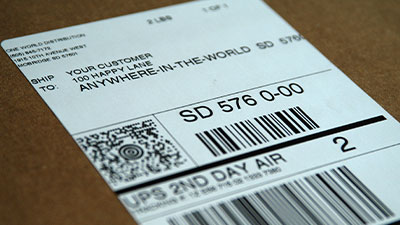If you work with a 3PL, understanding the order fulfillment process is a key factor for success. It includes everything from receiving inventory to processing a custom return. Order fulfillment is crucial in ensuring customer satisfaction by providing timely and accurate orders shipped. In the context of ecommerce, it involves a complex system of logistics that includes managing inventory, processing orders, packaging, shipping, and handling returns.
Efficient order fulfillment logistics can significantly impact your brand’s reputation and customer loyalty by enhancing the overall shopping experience.
A reliable partner in this journey is a 3PL (third-party logistics) provider. 3PLs play an important role in making ecommerce shipping and fulfillment more efficient by offering expertise and infrastructure that businesses may not have in-house. By outsourcing fulfillment, businesses can focus on their main activities while ensuring their customers receive their orders smoothly and quickly.
Understanding the Order Fulfillment Process
Order Fulfillment Definition
Order fulfillment refers to the entire process of handling an online order, starting from when it’s received and ending with handing it over to the carrier for delivery. This process involves several steps: managing inventory, processing orders, packing items, shipping them out, and dealing with returns. For businesses that sell directly to consumers (B2C), efficient order fulfillment is crucial for keeping customers happy and building brand loyalty.
Self-Fulfillment vs. Outsourcing to 3PL
When it comes to fulfilling orders, ecommerce businesses have two main options: self-fulfillment or outsourcing to a 3PL. The choice between these two approaches is an important strategic decision:
Self-Fulfillment | Outsourcing to 3PL |
|---|---|
Businesses handle their entire fulfillment process in-house. | Instead of managing logistics themselves, businesses partner with specialized providers who have expertise in this area. |
This approach gives them direct control over inventory and operational processes. | This allows them to scale their operations and access advanced technology without having to spend large amounts of money upfront. |
However, it often requires significant investment in infrastructure and human resources. | By outsourcing logistics tasks, businesses can free up time and resources to focus on other important activities such as marketing and product development. |
Both self-fulfillment and outsourcing have their own advantages. While self-fulfillment may be a better fit for small businesses with manageable order volumes, a 3PL can offer significant benefits when it comes to efficiently scaling operations.
Advantages of Outsourcing Fulfillment to a 3PL Provider
Benefits of outsourcing order fulfillment include:
- Scalability: Partnering with a 3PL provider allows your ecommerce operation to scale rapidly. With access to expansive warehousing spaces and advanced logistics networks, you can handle fluctuations in demand without investing in additional infrastructure.
- Efficiency Improvements: 3PL providers specialize in logistics, offering expertise that streamlines operations. By leveraging their sophisticated technology and processes, you can enhance order accuracy, reduce lead times, and improve overall customer satisfaction.
- Cost Savings: Outsourcing reduces the need for capital investment in warehouse facilities, staff, and technology. By sharing resources with other clients, your business benefits from economies of scale, decreasing overhead costs.
These advantages position your business to focus on core competencies while leaving the complexities of fulfillment to the experts.
Key Stages in the Order Fulfillment Process
The order fulfillment process is a crucial part of ecommerce operations. It ensures that products are delivered to customers efficiently and accurately. Here’s an overview of the key stages involved:
- Receiving Inventory: This initial stage involves accepting and inspecting incoming stock from suppliers. This sets the foundation for effective inventory management.
- Warehousing & Storage: Once received, goods are stored in an organized manner to make it easy to retrieve them quickly. An efficient warehousing system is essential for maintaining productivity.
- Order Processing: This stage includes picking items from storage, packing them securely, and getting orders ready for shipment. It’s important to maintain quality control at this point to keep customers happy.
- Shipping: Here, choosing reliable and fast delivery carriers is crucial. Using real-time tracking technologies like lot tracking, order management systems, EDI Integration, and WMS to improve transparency and build customer trust.
- Returns & Reverse Logistics: Handling returns effectively not only enhances the customer experience but also helps retain customers by demonstrating a commitment to excellent service.
1. Receiving Inventory: Managing Inbound Stock Effectively
Effective inbound stock management for ecommerce is crucial for maintaining a seamless order fulfillment process. 3PL providers excel in this area, leveraging sophisticated systems and procedures to manage inventory efficiently.
How 3PLs Manage Inbound Stock Effectively
- Advanced Technology Integration: 3PLs employ cutting-edge technology to track and manage inbound shipments. This tech integration ensures real-time visibility of inventory levels and movement, reducing the chances of errors.
- Streamlined Processes: Upon arrival, goods are quickly checked against purchase orders using barcode scanners or RFID technology. This rapid verification process minimizes discrepancies and initiates timely stock updates.
- Efficient Space Utilization: Strategic warehouse layouts and storage solutions optimize space usage, ensuring that incoming stock is stored systematically for easy retrieval.
Importance of Quality Control During Receiving Processes
Quality control during the receiving stage cannot be overstated. It safeguards against potential disruptions in the supply chain by ensuring that only products meeting quality standards enter the inventory.
- Inspection Protocols: Items are inspected for damage or defects as soon as they arrive, allowing for immediate resolution of issues with suppliers.
- Documentation and Reporting: Detailed records of received goods include condition reports and discrepancies, enabling transparent communication with stakeholders.
By prioritizing effective inbound stock management and stringent quality control measures, 3PLs enhance the reliability and efficiency of ecommerce operations.
2. Warehousing & Storage: Organizing Your Warehouse for Efficiency
Efficient warehouse organization is crucial for ecommerce businesses aiming to optimize their order fulfillment process. A well-structured warehousing system ensures swift retrieval of products, minimizing delays and enhancing customer satisfaction.
Key elements of effective warehouse organization include:
- Strategic Layout Design: The arrangement of inventory should prioritize high-demand items closer to packing stations. This reduces time spent on picking and streamlines the flow of goods from storage to dispatch. 3PLs can also offer kitting services, batch picking, and customizable fulfillment solutions to improve efficiency.
- Categorization and Labeling: Products need clear categorization based on various attributes such as type, size, or SKU. Using systematic labeling with barcodes or RFID tags accelerates product identification and retrieval.
Methods for effective inventory tracking play a pivotal role in maintaining seamless operations:
- Real-Time Inventory Management Systems (IMS): Implementing advanced IMS provides accurate stock levels, aiding in demand forecasting and replenishment planning. Real-time data helps prevent stockouts and overstock situations.
- Cycle Counting Practices: Regular cycle counts ensure inventory accuracy without disrupting daily operations. This practice involves counting a subset of inventory continuously throughout the year, maintaining precise records.
Incorporating these strategies into your warehouse management system improves efficiency and supports scalable growth in ecommerce logistics.
3. Order Processing: Picking, Packing, and Ensuring Quality Control
The picking and packing stages are crucial to any ecommerce operation. These processes need accuracy and speed to meet customer expectations. During the picking phase, items are chosen from storage based on customer orders. Efficient picking depends on advanced inventory tracking systems that minimize mistakes and boost productivity.
 Packing comes next, where selected items are carefully packaged for shipping. This step involves using suitable materials to safeguard products during transit, making sure they arrive at customers in perfect condition and achieve sustainable fulfillment.
Packing comes next, where selected items are carefully packaged for shipping. This step involves using suitable materials to safeguard products during transit, making sure they arrive at customers in perfect condition and achieve sustainable fulfillment.
Quality control is essential throughout the order fulfillment process to maintain high standards and ensure customer satisfaction. Implementing strict checks at each stage—picking, packing, and shipping—helps avoid mistakes like sending wrong items or damaged goods. By maintaining quality control measures, businesses build customer trust and loyalty, ultimately leading to repeat purchases.
Focusing on these aspects of order processing not only makes operations smoother but also sets up your ecommerce business for success by consistently providing outstanding service.
4. Ecommerce Shipping and Fulfillment: Selecting Carriers and Providing Real-Time Tracking
Selecting the right shipping carriers for your ecommerce business is crucial for ensuring timely and reliable deliveries. Here are some key criteria to consider when choosing carriers:
- Speed: Evaluate carrier options based on delivery speed to meet customer expectations. Fast shipping can be a competitive advantage.
- Reliability: Look for carriers with a proven track record in handling ecommerce deliveries efficiently, minimizing delays and mishandling.
The choice of shipping partners directly influences customer satisfaction and brand reputation. Integrating multiple carriers can offer flexibility and cater to diverse customer needs.
The Impact of Real-Time Tracking Technologies
Real-time tracking technologies transform the shipping experience by offering transparency:
- Customer Transparency: Real-time updates empower customers with information on their order status, enhancing trust.
- Satisfaction: Immediate access to tracking details reduces anxiety about delivery times, contributing to a positive shopping experience.
The Importance of Investing in Integration Systems
Investing in systems that provide seamless integration of real-time tracking capabilities ensures that your customers remain informed every step of the way. This strategic approach not only strengthens your fulfillment process but also elevates the overall customer experience, paving the path for repeat business and brand loyalty.
5. Returns & Reverse Logistics: Handling Returns Efficiently to Enhance Customer Experience
Efficient returns management in ecommerce order fulfillment is crucial for keeping customers happy and building loyalty. A smooth reverse logistics process not only recovers value from returned products but also boosts your brand’s reputation. Here are some strategies to optimize returns:
1. Clear Return Policies
Establish transparent, easy-to-understand return policies. This clarity reduces customer friction and sets expectations upfront.
2. Automated Return Systems
Implement systems that allow customers to initiate returns online effortlessly. Automation speeds up the process and frees up resources for other operational needs.
3. Pre-Printed Return Labels
Including pre-printed return labels within shipments simplifies the return process for customers, encouraging repeat business by demonstrating convenience and customer care.
4. Quality Inspection & Restocking
Efficient inspection protocols ensure returned goods are rapidly assessed and restocked or refurbished if necessary, minimizing inventory loss.
5. Analytics and Feedback
Utilize data from returns to identify product issues or process inefficiencies. Customer feedback can provide valuable insights into product improvements or service enhancements.
These strategies ensure that the post-purchase experience is as seamless as the initial transaction, directly impacting retention rates. Beyond operational efficiency, effective reverse logistics can turn potential dissatisfaction into opportunities for strengthening customer relationships.
Challenges Faced by Businesses in Order Fulfillment
Navigating the complexities of the order fulfillment process presents several challenges for ecommerce businesses. Chief among these are inventory management issues and demand planning difficulties.
Inventory Management Issues
- Maintaining accurate stock levels can be daunting, particularly as product catalogs expand. Overstocks tie up capital, while stockouts lead to missed sales opportunities and dissatisfied customers.
- Real-time inventory tracking is crucial. Without it, businesses risk misalignments between available stock and customer demand.
Demand Planning Difficulties
- Predicting fluctuations in consumer demand requires sophisticated analytics. Inaccurate forecasts can result in either surplus inventory or insufficient stock to meet demand spikes.
- Adapting to seasonal variations and promotional events demands agility in operations. Misjudging these factors can cripple fulfillment capabilities.
Addressing these challenges requires leveraging technology for precision and adopting agile practices. The integration of advanced inventory systems and predictive analytics tools plays a pivotal role in overcoming these hurdles, ensuring that your fulfillment operations remain resilient and responsive to market dynamics.
Best Practices for Efficient Order Fulfillment Operations
Efficiency in ecommerce order fulfillment is crucial for staying competitive. It’s important to choose the right fulfillment model that suits your business needs. Whether you decide to fulfill orders yourself or use a 3PL, make sure to consider factors like order volume, scalability, and cost.
1. Use Real-Time Data
Another key aspect of effective order fulfillment is using real-time data. Making decisions based on data can improve inventory management by predicting demand patterns and optimizing stock levels. By implementing technologies that provide live updates on inventory status, you can reduce the risk of running out of stock or having excess inventory, leading to smoother operations.
2. Communicate Clearly with Customers
Clear communication with customers throughout the fulfillment process significantly impacts their satisfaction and loyalty. Send automated notifications to keep customers informed about their order status from processing to delivery. This transparency builds trust and decreases customer inquiries and potential dissatisfaction.
By following these best practices, you can align your operations with customers’ expectations while maximizing efficiency. This strategy prepares your ecommerce business to handle order fulfillment challenges and improve overall service quality.
Lower Costs and Improve Service with OWD
Understanding the order fulfillment process is essential for ecommerce businesses. It not only helps with logistics but also gives a competitive edge. When order fulfillment operations are optimized, customer satisfaction improves, leading to repeat business and a better brand reputation. By recognizing the importance of this process, businesses can streamline operations, cut costs, and grow efficiently.
- Effective order fulfillment is crucial for achieving overall business success in ecommerce.
- Consider outsourcing your order fulfillment operations to a reliable 3PL provider. This decision can introduce efficiencies, scalability, and expertise that are difficult to achieve independently.
Partnering with a 3PL allows you to focus on what you do best while ensuring excellent service delivery. Book a logistics consultation and discover how OWD can transform your brand. Use our call center services for superior ecommerce customer service. Leverage our personalized-to-consumer fulfillment services to offer seamless product personalization.
Start reaching shoppers across the country in two days with our extensive fulfillment network. Get the custom plan you need to scale and turn logistics from a cost to a profit center with OWD.
FAQs (Frequently Asked Questions)
What is order fulfillment in ecommerce?
Order fulfillment in ecommerce refers to the complete process of receiving, processing, and delivering customer orders. It encompasses everything from inventory management to shipping and handling returns, ensuring that customers receive their products efficiently and satisfactorily.
Why is order fulfillment important for ecommerce businesses?
Order fulfillment is crucial for ecommerce businesses as it directly impacts customer satisfaction and retention. A well-managed order fulfillment process can lead to faster deliveries, reduced costs, and improved overall efficiency, which helps businesses stay competitive in the market.
What role does a 3PL provider play in order fulfillment?
A 3PL plays a significant role in streamlining ecommerce shipping and fulfillment by handling logistics operations such as warehousing, inventory management, and shipping. This allows businesses to focus on core activities while benefiting from the expertise and resources of specialized logistics providers.
What are the key stages in the order fulfillment process?
The key stages in the order fulfillment process include receiving inventory, warehousing and storage, order processing (picking and packing), shipping, and managing returns. Each stage is essential for ensuring timely delivery and maintaining product quality.
What are the benefits of outsourcing order fulfillment to a 3PL provider?
Outsourcing order fulfillment to a 3PL provider offers numerous benefits, including scalability to meet demand fluctuations, improved operational efficiency through expert logistics management, cost savings by reducing overhead expenses, and access to advanced technology for tracking shipments.
How can ecommerce businesses effectively manage returns?
Ecommerce businesses can manage returns efficiently by implementing clear return policies, utilizing automated return processes, maintaining open communication with customers about their return status, and analyzing return data to identify trends that may help reduce future returns.




